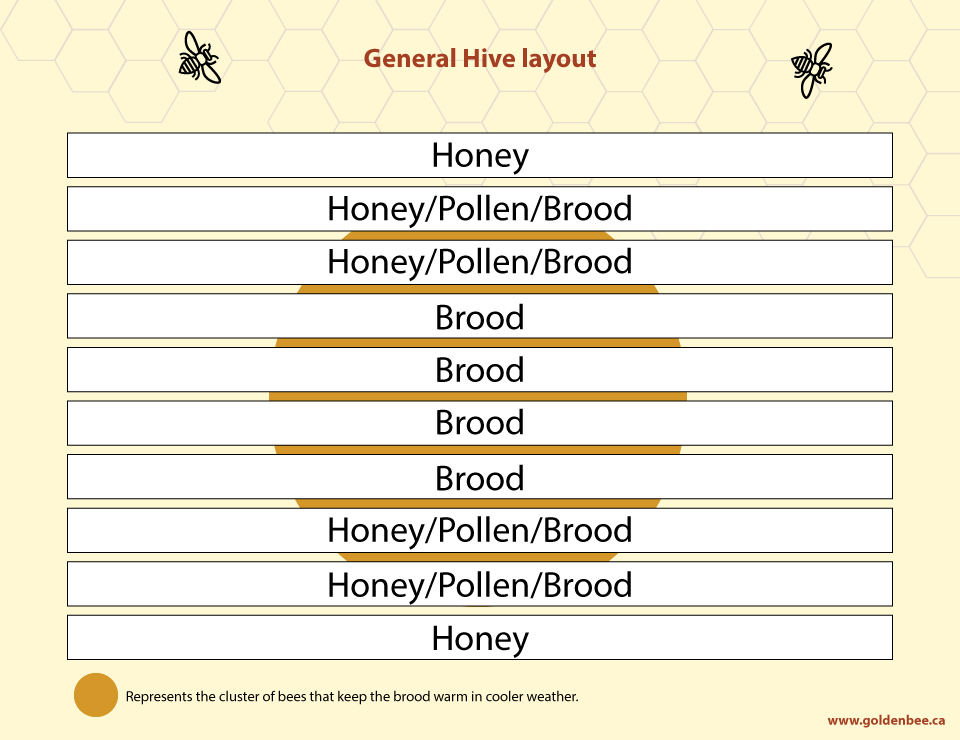Hive Inspections
Inspecting your Hives with Purpose
Inspecting beehives is a job that should be done ever 3 weeks in summer especially during peak swarm season. Bees can make swarm cells within 16 days so you want to check swarm risk hives more frequently during that time. This is a great swarm prevention technique but it’s not the only reason for inspecting your bees. The best management is to check just before you add lots of honey supers because nobody wants to take off all the honey supers just for an inspection.
When can you do Hive Inspections?

The best times to inspect beehives is when most of the forage bees are out of the hive and that’s mid afternoon. It’s also the hottest parts of the day. I try to avoid days where temperatures are close to 30 C because I’ve had heat exhaustion several times and become dizzy. Doing hive inspections at your own personal health isn’t wise, so I just avoid those hot days.
What do you check for during inspections?
Tips for the Inspection
Before you begin, you probably want to use a bee smoker to aid in your inspection. This will help calm down the bees and enable you to inspect without aggressive bees. If you have aggressive bees, you need to requeen.
When you pull the first frame, always pull one close to the edge of the box usually the second or third one in. Loosen the frame by pushing your hive tool down between the frames on both sides and both ends. Not doing this properly, will result in broken or splintered frames.
The queen is often in the middle near brood and eggs, and you don’t want to pull out a frame with a queen on it because the risk of killing or injuring her is increased. Once one frame is removed, you have much more space to wiggle the other frames. You need to be aware, any time you go into a hive, you risk accidently killing the queen. It’s happened before and I’ve read that most beekeepers kill at least 30 bees on an average inspection. Every time you squash a queen, you release the same pheromone a bee releases when stinging causing the bees to become aggressive. So take it slow and do not make sudden movements. As you remove frames, place vertically beside the hives in the same order as you took them out so you can put them back into the hive the same way.
The diagram above is a very general 10 frame layout. This is by no means meant to be 100% accurate but it’s a general idea of what you can expect when inspecting a brood chamber.
Some general observations:
- The brood will always be in the center of the hive.
- Honey is usually on the outside frames.
- Pollen is usually mixed in everywhere even in the center frames. It needs to be in close proximity to the brood.
- You may have many frames with all 3 components: Honey, Brood and Pollen and that’s ok.
Note: I often move the 2 outermost frames of honey up into the honey supers so they can be extracted. They take up valuable laying space when running single brood chambers. Strong queens can lay 10 frames full of brood and leave little space for honey in the brood chambers. Underperforming queens will allow the brood chamber to become full of honey. This is usually an indicator that the queen is failing and we will requeen if that is the issue. However, it is normal for a beehive being naturally requeened by supercedure to have more honey in the brood chamber. This is because of all the empty cells where brood is usually located. Bees might fill all frames with pollen and honey and the new queen may have no laying space. When this happens, simply move frames into the honey supers and provide the new queen with 3-4 new drawn out frames so she has laying space. This is why the entire hive needs to be observed and inspected to make a fair judgement call.
When you do hive inspections there are certain things you look out for. More details are in our Hive Inspection Checklist post.
